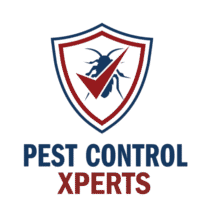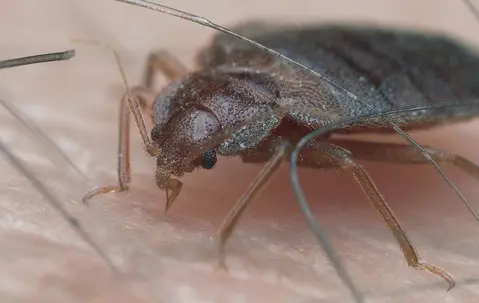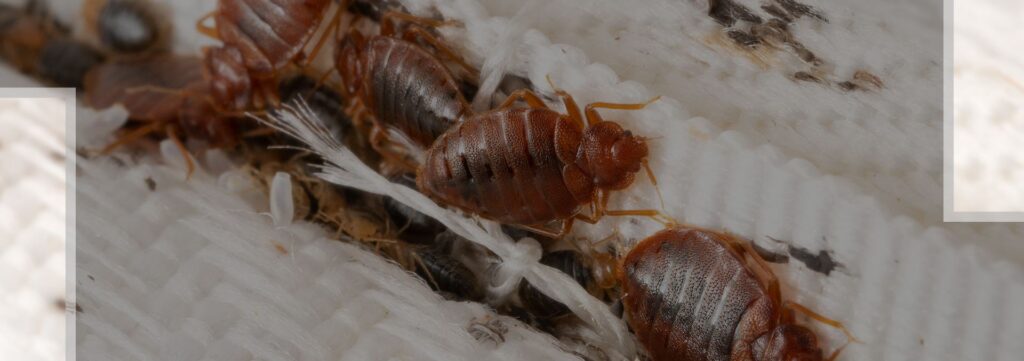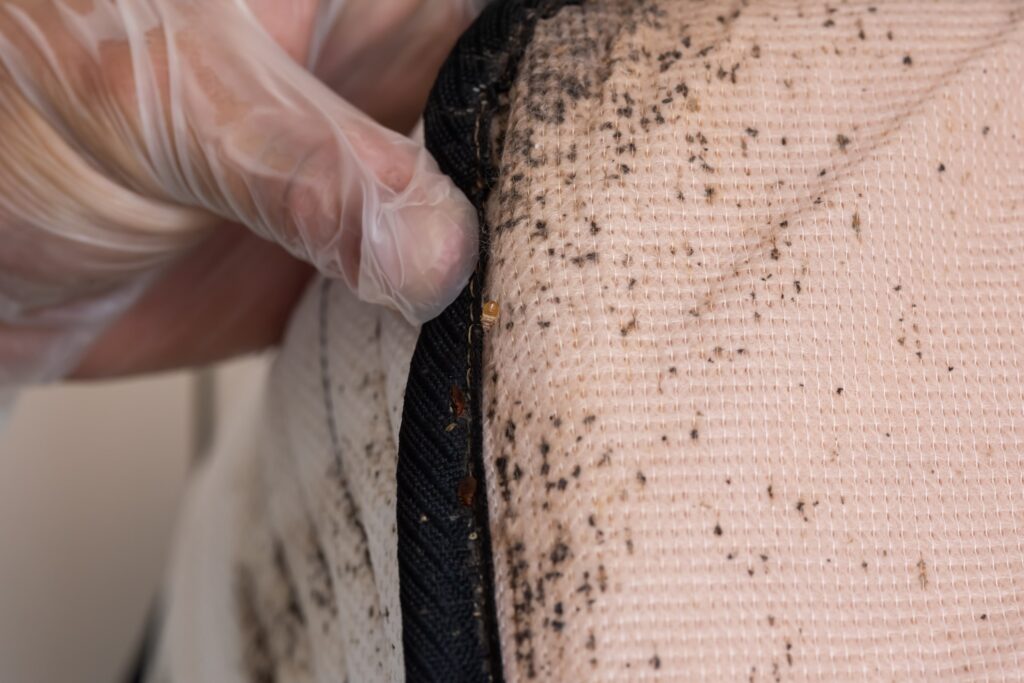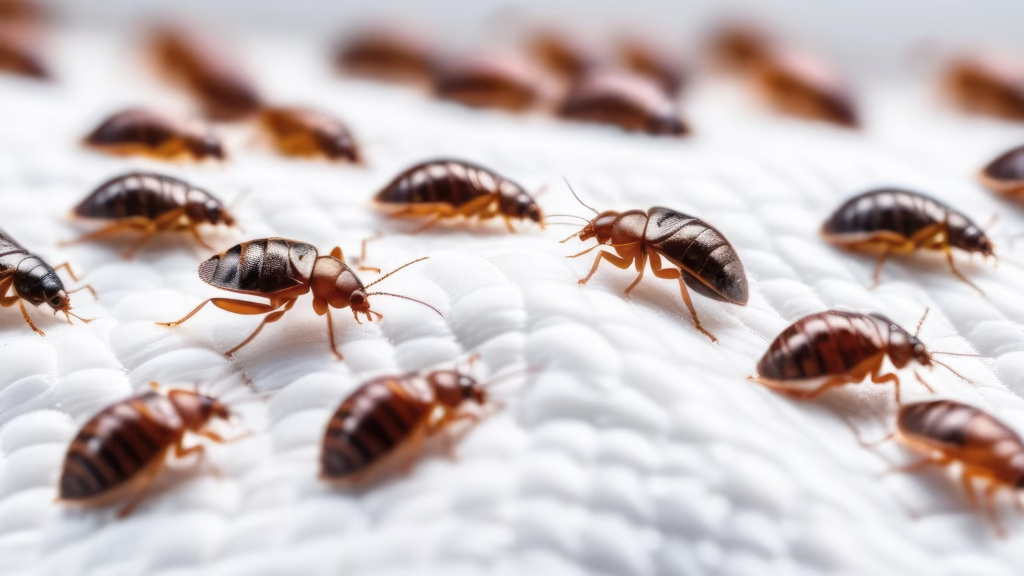Bed Bug Removal Services by Pest Control Xperts in Pleasanton
Serving homes, apartments, dormitories, hotels, and healthcare offices throughout Pleasanton, California, and Surrounding Areas
Pleasanton Bed bug Control Experts: Your Definitive Solution for Lasting Extermination
The unsettling itch, the sleepless nights, the creeping dread of finding another tiny, reddish-brown intruder – if you’re a property owner in Pleasanton, California, battling a bed bug infestation, you understand this frustration intimately. You’ve likely tried every DIY spray, trap, and home remedy, only to see these resilient pests return, seemingly stronger than before. This isn’t a failure on your part; it’s the nature of bed bugs. What you see on the surface is merely an illusion, undone by the hidden colony thriving deep within your home’s sanctuary. At Pleasanton Pest Control Experts, we offer more than temporary fixes; we provide a professional, comprehensive bed bug control service designed to eliminate the problem at its source, ensuring your peace of mind and reclaiming your home from these relentless invaders.
Why Bed Bugs Appear in Pleasanton and Surrounding Communities
Pleasanton’s unique climate and geographical characteristics, nestled within the Sacramento Valley, play a significant role in the prevalence and behavior of bed bugs. The region experiences distinct seasonal transitions, from hot, dry summers to cold, foggy winters, which directly influence bed bug activity and their drive to seek shelter indoors. During the scorching summer months, as outdoor moisture evaporates and drought conditions prevail, bed bugs are driven indoors in search of stable environments and essential moisture sources. Conversely, the cooler, foggier winters compel them to seek insulation and warmth within our homes and businesses, making them a year-round threat.
The influence of the Feather River floodplain dynamics contributes to specific microclimates that can support certain bed bug species. While bed bugs generally prefer dry conditions, the local agricultural irrigation and flood control systems can create high-moisture pockets, which, while not directly attracting bed bugs, can indirectly support other pests that might be part of a broader ecosystem, or create conditions that make structures more vulnerable to various pest intrusions, including bed bugs seeking harborage in damp, secluded areas.
The Sutter Buttes, often referred to as the “world’s smallest mountain range,” serve as a refuge zone for various wildlife. While not directly impacting urban bed bug populations, the natural environment surrounding Pleasanton means there’s a constant interplay between wild and urban ecosystems, which can sometimes facilitate the movement of pests, including bed bugs, from one area to another, particularly through human activity.
Architecturally, Pleasanton presents a diverse landscape, and this structural variety significantly impacts how vulnerable properties are to bed bug infestations. New tract housing developments, with their modern construction and often tighter seals, may offer fewer immediate entry points for bed bugs. However, even these homes are not immune. Bed bugs can easily be introduced through furniture, luggage, or even on clothing. Once inside, the uniform construction can sometimes make detection challenging, as bed bugs can quickly spread through shared walls or ventilation systems in multi-unit dwellings.
Older homes in Pleasanton’s historic center, with their charming character, often come with unique structural vulnerabilities. These properties may have more cracks, crevices, and less-sealed foundations, providing numerous hidden entry points and harborage areas for bed bugs. The presence of older wooden structures can also offer more opportunities for bed bugs to hide and establish colonies deep within walls and floorboards. The historical movement of goods and people in these older areas also means a higher likelihood of past infestations, which, if not thoroughly eradicated, can leave residual populations or conducive conditions for new ones.
Beyond the natural and architectural factors, the transportation of goods plays a critical role in the spread of pervasive bed bugs throughout Pleasanton and beyond. Commercial trucks, delivery vehicles, and even personal vehicles constantly move in and out of the city, inadvertently acting as vectors for bed bugs. These pests can hitchhike on packaging, furniture, or even within the vehicles themselves, allowing them to travel long distances and establish new infestations in previously unaffected areas. This constant movement underscores the need for vigilant prevention and rapid response when an infestation is suspected.
Furthermore, human activity and population density contribute to bed bug proliferation. Pleasanton’s vibrant community, with its schools, businesses, hotels, and residential areas, creates ample opportunities for bed bugs to transfer from one location to another. Public transportation, shared living spaces, and even social gatherings can become unwitting conduits for these hitchhiking pests. Understanding these multifaceted factors – from climate and geography to architecture and human movement – is crucial for developing effective, long-term bed bug control strategies tailored to the specific challenges faced by property owners in Pleasanton.
Understanding the Enemy: Local Bed bug Species and Their Unique Threats
While the term “bed bug” often conjures images of the common house bed bug, Pleasanton can be home to several species, each with distinct behaviors and threats. Understanding these differences is key to effective extermination.
- Carpenter Bed Bugs: These are not true bed bugs, but rather a common misidentification. Carpenter bed bugs are actually large, wood-destroying bed bugs that tunnel through wood to create nests, not to eat it.
- Identification: Often large, black or reddish-black, and can be winged. They do not sting or bite.
- Behavior: They prefer damp, decaying wood but can also infest sound wood, creating smooth tunnels. They are most active at night.
- Specific Risks: Significant structural damage to homes and businesses, weakening wooden beams, floors, and walls, leading to costly repairs.
- Pavement Bed Bugs: These bed bugs are commonly found outdoors, nesting under rocks, pavement, and concrete slabs. They can invade homes, especially during hot, dry weather or heavy rains.
- Identification: Small, dark brown to black, with a segmented body.
- Behavior: They forage for food outdoors but will enter structures through cracks in foundations, gaps under doors, or utility penetrations.
- Specific Risks: While primarily a nuisance, large indoor populations can contaminate food and sterile areas.
- Odorous House Bed Bugs: Known for the distinctive, unpleasant odor they emit when crushed, these bed bugs are a common household nuisance.
- Identification: Small, dark brown or black, with an unevenly shaped thorax.
- Behavior: They form large colonies and are attracted to sugary foods. They often trail along electrical wires and pipes.
- Specific Risks: Contamination of food, unhygienic conditions, and the difficulty of eradication due to their tendency to form multiple satellite colonies.
- Pharaoh Bed Bugs: These tiny, light yellow or reddish-brown bed bugs are a significant concern, particularly in hospitals and food processing facilities, due to their ability to spread pathogens.
- Identification: Very small, almost translucent, making them hard to spot.
- Behavior: They prefer warm, humid environments and can nest in inaccessible areas like wall voids and behind appliances. They are notoriously difficult to control due to their colony budding behavior.
- Specific Risks: Contamination of food, sterile environments, and the potential to transmit bacteria. Their budding behavior makes DIY efforts largely ineffective.
- Fire Bed Bugs: These bed bugs are named for their reddish-orange and black coloration. They are often found outdoors but can enter homes, especially in search of food or shelter.
- Identification: Distinctive red and black markings.
- Behavior: They are attracted to seeds and can be found in gardens. They may enter homes through cracks and crevices.
- Specific Risks: While not typically damaging to structures, large indoor populations can be a significant nuisance and contaminate food sources.
- Argentine Bed Bugs: Highly invasive, these bed bugs form supercolonies that can span vast areas, making them incredibly challenging to control.
- Identification: Small, dark brown, and move in distinct trails.
- Behavior: They displace native bed bug species and can quickly infest homes, often entering through small openings.
- Specific Risks: Contamination of food, damage to electrical wiring, and their aggressive nature makes them a persistent nuisance.
- Thief Bed Bugs: These tiny, shiny, reddish-brown bed bugs are known for their habit of feeding on dead insects and animal matter, but they can also infest food products.
- Identification: Small, oval, and very shiny.
- Behavior: They are attracted to pantries and areas where food is stored, often nesting in cracks and crevices.
- Specific Risks: Contamination of stored food products, leading to waste and potential health concerns.
Problems Bed Bugs Create for Homes and Businesses
An unchecked bed bug infestation extends far beyond a simple nuisance, posing significant threats to both residential and commercial properties.
- Food Contamination: Many bed bug species, particularly odorous house bed bugs, pharaoh bed bugs, and pavement bed bugs, are attracted to food sources. They can infest pantries, kitchens, and food preparation areas, contaminating food products with their waste and bodies, leading to unhygienic conditions and potential health risks.
- Property Damage: While not all bed bugs cause structural damage, carpenter bed bugs are notorious for tunneling through wood, creating extensive galleries that can compromise the structural integrity of your home or business. This can lead to weakened beams, floors, and walls, necessitating expensive repairs. Other bed bugs, through their nesting habits, can also damage insulation, wiring, and other building materials.
- Brand Reputation Risk: For businesses, a bed bug infestation can be catastrophic for brand reputation. News of bed bugs in a restaurant, hotel, or retail store can spread rapidly, leading to a significant loss of customers, negative reviews, and a tarnished image that can take years to rebuild.
- Health Risks: Beyond the immediate discomfort of bites, bed bugs can pose various health risks. Bites can lead to skin irritation, allergic reactions, and secondary infections from scratching. In some cases, bed bugs, like pharaoh bed bugs, have been implicated in the mechanical transmission of certain pathogens, particularly in sensitive environments like healthcare facilities. The psychological impact of living with bed bugs, including stress, anxiety, and sleep deprivation, should also not be underestimated.
Signs of an Escalating Bed bug Infestation: When to Call the Experts
Recognizing the early signs of a bed bug problem can prevent it from spiraling into a full-blown infestation. However, if you observe any of the following, it’s a clear indication that professional intervention is urgently needed:
- Visible Bed Bug Trails: Certain bed bug species, like Argentine bed bugs and odorous house bed bugs, move in distinct trails. If you see lines of bed bugs marching along baseboards, countertops, or walls, it signifies a well-established and active colony.
- Frass from Carpenter Bed Bugs: If you suspect carpenter bed bugs, look for “frass,” which is their sawdust-like excrement. It often appears as fine wood shavings near wooden structures, indicating active tunneling and structural damage. What does frass from carpenter bed bugs look like? It resembles fine sawdust mixed with darker, granular pellets.
- Contaminating Food: Finding bed bugs in your pantry, kitchen, or directly on food items is a critical sign of an escalating problem. This indicates that bed bugs have moved beyond isolated foraging and are actively infesting food storage areas.
- Satellite Colonies: While the main colony might be hidden, the presence of smaller, “satellite colonies” in various parts of your home, such as behind picture frames, in electrical outlets, or under appliances, suggests a widespread infestation and a strong reproductive cycle.
- Bed Bug Nests: Discovering actual bed bug nests, which can look like piles of debris, bed bug bodies, and eggs in secluded areas, is a definitive sign of a severe infestation requiring immediate professional attention.
- Bed Bug Mounds: For species like pavement bed bugs, visible mounds of soil or debris near foundations or outdoor structures can indicate a large outdoor colony that may be actively seeking entry into your home.
- Why do I keep getting bed bugs in my house? Persistent bed bug issues, despite your efforts, often mean you’re only addressing visible bed bugs, not the hidden colony and its queen. This cycle of recurrence is a strong indicator that professional, targeted treatment is required.
- Why do bed bugs suddenly appear in my bathroom? Bed bugs appearing in unusual places like bathrooms can indicate a severe infestation, as they are expanding their territory in search of new food sources and harborage, often utilizing plumbing and electrical pathways.
- What are the signs of a major bed bug infestation? Multiple visible bed bug trails, widespread frass, bed bugs in food, numerous satellite colonies, and the discovery of actual bed bug nests are all unequivocal signs of a major infestation.
Why Professional Extermination is Essential for Bed bug Removal
The allure of store-bought sprays and traps is understandable, but when it comes to bed bugs, these DIY methods are temporary illusions undone by the hidden colony. Bed bugs are incredibly resilient and reproduce rapidly. Here’s why professional extermination is the only true solution:
- Hidden Colonies: Bed bugs don’t just reside where you see them. They establish intricate nests deep within walls, foundations, and inaccessible areas. Store-bought products only treat surface bed bugs, leaving the core colony, including the queen and eggs, untouched. This ensures a rapid resurgence of the infestation.
- Colony Budding: Species like pharaoh bed bugs exhibit “colony budding,” where a portion of the colony breaks off to form new nests when threatened. DIY treatments can inadvertently trigger this, spreading the infestation to new areas of your home and making eradication even more challenging.
- Resistance to Chemicals: Many bed bug populations have developed resistance to common over-the-counter pesticides. What might have worked years ago is often ineffective today, leading to wasted effort and continued frustration.
- Specialized Knowledge and Equipment: Professional exterminators possess the expertise to identify specific bed bug species, understand their unique behaviors, and locate hidden nests. They utilize specialized equipment and professional-grade treatments that are not available to the public, ensuring thorough and effective eradication.
- Integrated Pest Management (IPM): Professionals employ an Integrated Pest Management approach, which combines various strategies for long-term control. This includes inspection, identification, targeted treatments, exclusion techniques, and ongoing monitoring, addressing the root cause of the infestation rather than just the symptoms.
- How long does professional bed bug control take to work? While initial results can be seen quickly, complete bed bug control typically involves a series of treatments and follow-up visits to ensure all life stages are eliminated and the colony is fully eradicated. The duration depends on the severity of the infestation.
Advanced Bed bug Exclusion Methods and Structural Pest Control
After the initial eradication of bed bugs, implementing robust exclusion methods and structural pest control is paramount to preventing future infestations. At Pleasanton Pest Control Experts, our approach goes beyond just eliminating existing bed bugs; we fortify your property against re-entry.
- Foundation Sealing: Many bed bug species, especially pavement bed bugs, gain entry through cracks and gaps in your home’s foundation. We meticulously inspect and seal these vulnerabilities, creating a physical barrier against intrusion. This includes addressing utility penetrations and any other openings that could serve as entry points.
- Moisture Control: While bed bugs generally prefer dry environments, excessive moisture can attract other pests that might indirectly lead to bed bug issues or create conducive conditions for bed bugs seeking harborage. We assess and advise on moisture control strategies, such as improving ventilation in crawl spaces and basements, repairing leaky pipes, and ensuring proper drainage around your property. This helps to eliminate conditions that could attract or sustain bed bug populations.
- Crack and Crevice Treatment: Bed bugs are masters of hiding. We conduct thorough crack and crevice treatments, sealing off tiny openings in walls, floors, and around windows and doors. This not only eliminates existing harborage but also prevents bed bugs from establishing new hidden nests.
- Perimeter Defense: We establish a comprehensive perimeter defense around your home or business, applying targeted treatments to the exterior of your property. This creates an invisible barrier that deters bed bugs from approaching and entering your structure.
- Bed Bug Barriers: For specific situations, we can implement specialized bed bug barriers, such as those around bed frames or furniture, to prevent bed bugs from climbing onto sleeping or resting areas. These physical barriers complement our chemical treatments for enhanced protection.
- Exclusion Techniques: Our technicians are experts in identifying and implementing various exclusion techniques, including repairing damaged screens, installing door sweeps, and sealing gaps around utility lines. These measures are critical in creating a bed bug-resistant environment.
Our Bed bug Removal Method: A Step-by-Step IPM Approach
At Pleasanton Pest Control Experts, we employ a meticulous, Integrated Pest Management (IPM) approach to bed bug removal, ensuring thorough eradication and long-term prevention.
- Consultation & Inspection: Our process begins with a detailed consultation to understand your bed bug concerns. Our expert technicians then conduct a comprehensive inspection of your property, both indoors and outdoors. We identify the specific bed bug species, locate all active and satellite colonies, assess the severity of the infestation, and pinpoint entry points and conducive conditions.
- Customized Treatment: Based on our findings, we develop a customized treatment plan tailored to your unique situation. This plan incorporates a combination of targeted treatments designed to eliminate bed bugs at all life stages. We utilize professional-grade products and application methods that are highly effective against bed bugs while prioritizing the safety of your family and pets. Is bed bug baiting safe for pets? Our bed bug baiting systems are designed for targeted application in inaccessible areas, minimizing exposure to pets. We will discuss all safety protocols during your consultation.
- Exclusion & Maintenance: Following the initial treatment, we implement advanced exclusion techniques to seal off entry points and fortify your property against future infestations. This includes sealing cracks, addressing moisture issues, and creating a robust perimeter defense. We also provide recommendations for ongoing maintenance to help you keep bed bugs at bay.
- Monitoring: Our commitment to your peace of mind extends beyond the initial treatment. We establish a monitoring program to track bed bug activity and ensure the complete eradication of the infestation. This may involve follow-up visits to re-inspect treated areas and apply additional treatments if necessary.
Tailored Commercial Bed bug Services
Businesses in Pleasanton face unique challenges when it comes to bed bug control, where even a minor infestation can have significant financial and reputational consequences. Pleasanton Pest Control Experts offers tailored commercial bed bug services designed to protect your business, employees, and customers.
- Discrete Service: We understand the sensitivity surrounding bed bug infestations in commercial settings. Our technicians provide discrete service, arriving in unmarked vehicles and working efficiently to minimize disruption to your operations and maintain your privacy.
- HACCP Compliance: For businesses in the food industry, maintaining HACCP (Hazard Analysis and Critical Control Points) compliance is crucial. Our bed bug control programs are designed to integrate seamlessly with your existing HACCP protocols, ensuring that your facility remains free of bed bugs and compliant with all regulatory standards.
- Integrated Pest Management (IPM) for Businesses: Our commercial IPM approach focuses on long-term prevention and control, minimizing the use of pesticides while maximizing effectiveness. This includes regular inspections, targeted treatments, exclusion strategies, and ongoing monitoring to proactively address bed bug threats.
- Protecting Brand Reputation: A bed bug infestation can severely damage your business’s reputation. Our rapid response and effective treatment protocols help to quickly resolve bed bug issues, safeguarding your brand and ensuring customer confidence.
- Employee and Customer Safety: We prioritize the safety of your employees and customers. Our treatments are carefully selected and applied to minimize any potential impact on human health, and we provide clear communication regarding re-entry times and any necessary precautions.
Why Pleasanton Relies on Pleasanton Pest Control Experts for Definitive Bed bug Control
When bed bugs invade, you need a partner you can trust to deliver definitive results. Pleasanton Pest Control Experts stands as the premier authority in bed bug control for the Pleasanton area, and here’s why:
- Regional Familiarity: We are deeply rooted in the Pleasanton community. Our extensive experience in the Sacramento Valley means we possess an unparalleled understanding of the local bed bug species, their behaviors, and the environmental factors that influence their presence. This regional familiarity allows us to develop highly effective, localized treatment strategies.
- Focus on Complete Colony Elimination: Unlike DIY methods that offer temporary relief, our core objective is the complete elimination of the bed bug colony, including the queen and all life stages. We don’t just treat the symptoms; we eradicate the source, ensuring a lasting solution to your bed bug problem.
- Expertise and Experience: Our team comprises world-class pest control experts with extensive training and experience in bed bug biology and advanced extermination techniques. We stay abreast of the latest advancements in pest management to provide you with the most effective and efficient solutions.
- Integrated Pest Management (IPM): We believe in a holistic, sustainable approach to pest control. Our IPM strategies minimize environmental impact while maximizing effectiveness, focusing on long-term prevention and control rather than just reactive treatments.
- Customer-Centric Service: Your satisfaction and peace of mind are our top priorities. We provide transparent communication, thorough explanations, and dedicated support throughout the entire bed bug removal process, ensuring you feel informed and confident every step of the way.
The Value of Seasonal Bed bug Prevention
In Pleasanton’s distinct climate, seasonal bed bug prevention is not just a recommendation; it’s a crucial strategy for maintaining a bed bug-free home or business. Our seasonal bed bug service is designed to proactively address bed bug threats throughout the year, aligning with their natural cycles.
- Spring Prevention: As temperatures rise in spring, bed bugs become more active. Our spring service focuses on inspecting for emerging activity, applying preventative treatments to common entry points, and reinforcing exterior barriers to deter bed bugs from establishing themselves as the weather warms.
- Summer Protection: The hot, dry summers can drive bed bugs indoors in search of moisture and shelter. Our summer service emphasizes interior inspections, targeted treatments in high-risk areas, and ensuring that your home’s defenses against bed bug intrusion remain strong during their peak activity period.
- Fall Fortification: As the weather cools in the fall, bed bugs may seek warmer harborage indoors. Our fall service focuses on fortifying your home’s exterior, sealing any new cracks or gaps that may have appeared, and applying preventative treatments to ensure bed bugs don’t find refuge in your property for the winter.
- Bi-Monthly Service: For properties with a history of bed bug issues or those in high-risk areas, our bi-monthly service provides continuous protection. This proactive approach ensures that any potential bed bug activity is identified and addressed quickly, preventing infestations from taking hold.
Don’t let bed bugs dictate your comfort and peace of mind any longer. The cycle of DIY attempts and recurring infestations is a frustrating illusion. It’s time to choose the definitive solution that targets the hidden colony and provides lasting relief. Contact us for an immediate consultation and let Pleasanton Pest Control Experts reclaim your home from bed bugs today.
Our service area includes all relevant zip codes within Pleasanton, California, and surrounding communities.
